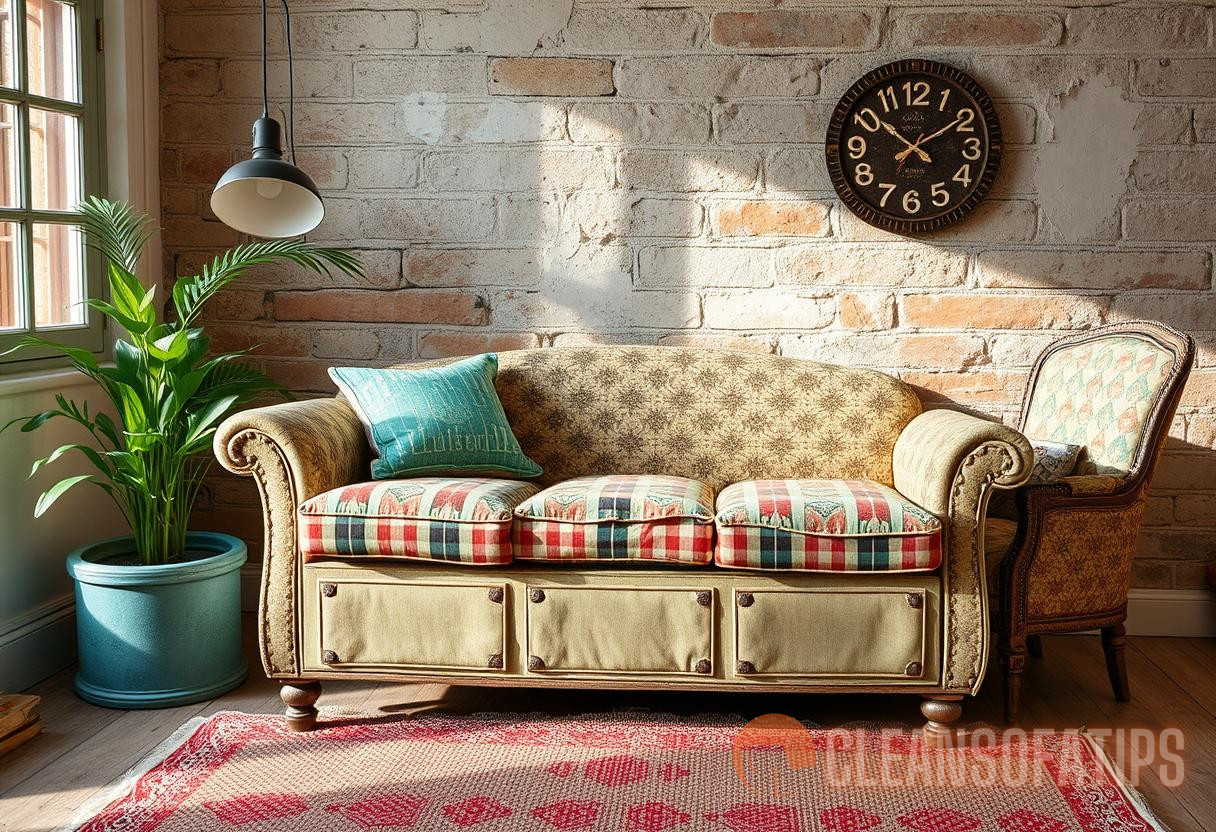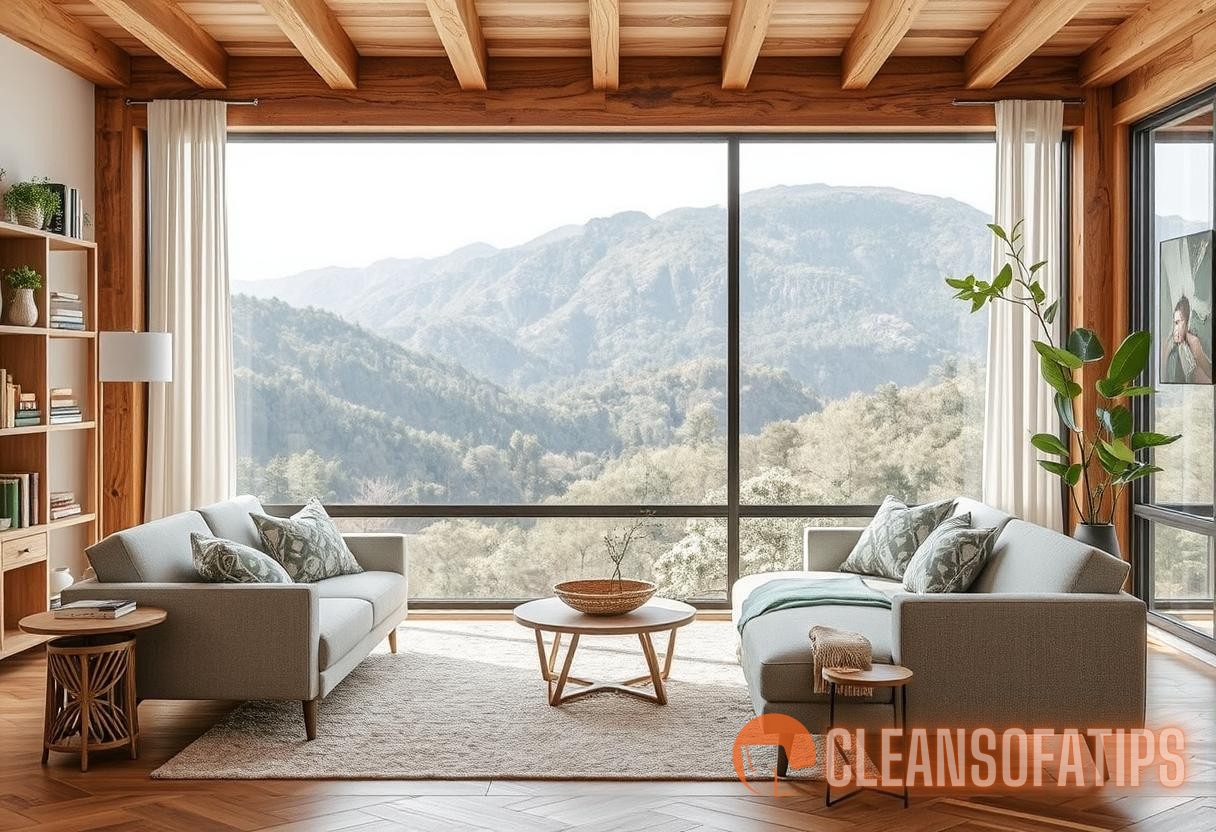Introduction to Eco-Friendly Upholstery
In an era where sustainability is at the forefront of consumer consciousness, eco-friendly upholstery has emerged as a pivotal area of interest. The fusion of nature-infused upholstery solutions presents a compelling intersection of ecology and innovation, thereby contributing significantly to sustainable living. As individuals become increasingly aware of the implications of their purchasing decisions, the demand for sustainable products, particularly in interior design, continues to rise.
The Importance of Sustainable Living
Sustainable living encapsulates a lifestyle that aims to minimize an individual’s or society’s use of the Earth’s natural resources. According to the United Nations, one of the main objectives of sustainable living is to ensure that future generations can thrive. The environmental impact of traditional upholstery materials, such as synthetic fibers and chemical-laden fabrics, underscores the necessity for alternatives that are both sustainable and stylish.
Consider these key statistics that illustrate the urgency for sustainable practices:
- Textile production accounts for approximately 10% of global carbon emissions, rivaling that of the aviation industry.
- More than 92 million tons of textile waste are generated each year, with a significant portion ending up in landfills.
- Eco-friendly upholstery can reduce VOC (volatile organic compounds) emissions, improving indoor air quality.
The Science Behind Eco-Friendly Upholstery
Eco-friendly upholstery not only refers to the materials used but also includes the processes involved in creating and maintaining these products.
Natural Fibers
Natural fibers such as cotton, linen, wool, and hemp are the cornerstones of eco-friendly upholstery. These materials are biodegradable and often renewable, representing a stark contrast to synthetic alternatives. Here are some properties of these materials:
- Cotton: Grown from the cotton plant, it is breathable, durable, and can be cultivated organically, reducing pesticide use.
- Linen: Made from flax, linen is incredibly strong and gets softer with each wash. It requires less water than cotton to grow.
- Wool: Derived from sheep, wool is naturally flame-resistant and insulates in both warm and cool climates.
- Hemp: This fast-growing plant uses significantly less water and no pesticides, making it an excellent sustainable choice.
Innovative Fabric Treatments
Incorporating eco-friendly treatments is essential to enhance the performance of natural fibers. Some innovative options include:
- Natural dyes: Utilizing plant-based dyes can minimize water pollution compared to synthetic dyes.
- Water-repellent coatings: Coatings made from natural wax or oils can help repel stains and spills without harmful chemicals.
- UV-resistant treatments: Certain treatments can protect fabrics from sun damage, prolonging their lifespan and reducing the need for replacements.
Benefits of Eco-Friendly Upholstery
The transition towards eco-friendly upholstery solutions carries with it numerous advantages not just for the environment, but also for personal health and financial savings:
Health Benefits
Traditional upholstery may contain harmful chemicals that can cause various health issues, including respiratory problems and skin irritation. By choosing eco-friendly upholstery, consumers can promote healthier living spaces. Some notable health benefits include:
- Improved indoor air quality due to lower VOC emissions.
- Reduction of allergens and irritants commonly found in synthetic materials.
- Safer for homes with children and pets.
Environmental Impact
Opting for eco-friendly upholstery contributes positively to the environment. Here’s how:
- Reduction in landfill waste from the use of biodegradable materials.
- Conservation of resources through sustainable sourcing and production.
- Lower carbon footprint associated with locally sourced materials.
Economic Considerations
While initial investments in eco-friendly upholstery may be perceived as higher, the long-term economic benefits are compelling. Consider these points:
- Durability of natural materials often translates to longer-lasting products.
- Potential energy savings through better insulation from natural fibers.
- Growing market for sustainable products can increase property value.
Practical DIY Solutions for Eco-Friendly Upholstery
For DIY enthusiasts, transforming spaces with eco-friendly upholstery presents an exciting opportunity. Below are practical solutions and techniques to incorporate sustainable practices into your upholstery projects.
Choosing the Right Materials
When embarking on a DIY upholstery project, selecting the appropriate materials is essential. Look for suppliers that provide certified organic or sustainably sourced fabrics. Websites like Organics.com and Etsy offer a wide variety of eco-friendly textiles.

Upcycling Old Furniture
Rather than discarding old furniture, consider upcycling as a sustainable solution. Here’s how to breathe new life into outdated pieces:
- Reupholstering: Remove old fabric and replace it with eco-friendly upholstery. This can include fabrics made from recycled materials.
- Painting and Finishing: Use natural paints or finishes to rejuvenate the furniture while adhering to eco-friendly standards.
- Combining Materials: Use reclaimed wood or metal elements in your design to minimize waste.
DIY Upholstery Techniques
Engaging in DIY upholstery can be both rewarding and educational. Here are some techniques to consider for projects:
- Spray Adhesives: Opt for organic adhesives that are free from harsh chemicals when adhering fabrics to surfaces.
- Sustainable Fabrics: Experiment with natural fibers such as canvas or burlap, renowned for their sustainability and aesthetics.
- Traditional Methods: Incorporating traditional upholstery methods like tacking or stitching can often use less material than modern methods.
Case Studies of Eco-Friendly Upholstery
Real-world examples highlight the increasing success of eco-friendly upholstery in transforming spaces. Here are a few notable case studies:
Case Study 1: The Green House Initiative
This initiative focuses on restoring traditional upholstery techniques that utilize natural materials like cotton and linen. The project has successfully outfitted numerous homes with stunning, sustainable interiors while adhering to eco-friendly upholstery guidelines.
Case Study 2: Sustainable Furniture Brands
Many furniture brands are leading the way in eco-friendly upholstery. For instance, brands like Furnish Green are dedicated to providing sustainable, pre-owned furniture that reduces waste while offering stylish, quality pieces. Their commitment to environmentally responsible products is reflected in their extensive collection of eco-friendly upholstery options.
Challenges and Solutions in Eco-Friendly Upholstery
While the transition to eco-friendly upholstery is promising, several challenges persist.
High Initial Costs
One of the primary challenges consumers face is the initial expense associated with eco-friendly upholstery. However, many solutions can mitigate these costs:
- Invest in Quality: Higher quality natural materials yield longer-lasting products that save money in the long run.
- Patience in Sourcing: Take the time to find deals, discounts, and local suppliers for eco-friendly materials.
- Community Support: Engage in local workshops or groups focused on sustainable design to gain insights on affordable practices.
Limited Availability of Materials
Access to eco-friendly upholstery materials may be limited in certain areas. Solutions include:
- Online Retailers: Browse through online vendors specializing in sustainable products.
- Networking: Connect with local craftsmen or artisan groups that prioritize sustainability to share materials and resources.
- Local Markets: Participate in farmer’s markets or local fairs that often feature sustainable craft vendors.
The Future of Eco-Friendly Upholstery
As consumer awareness continues to shift towards sustainability, the future of eco-friendly upholstery holds great promise. Emerging trends indicate a growing demand for transparency in material sourcing and production processes. Brands that embrace sustainability and innovation are likely to find a competitive edge in the market.
Innovation and Technology
Technological advancements in textile manufacturing will pave the way for improved eco-friendly options. Innovations such as:
- Bio-fabrication: The development of textiles from organic materials offers an exciting frontier in sustainable fashion.
- Reduced Production Waste: Technologies that minimize fabric waste during cutting and sewing processes.
- Smart Textiles: Fabrics that adapt to environmental conditions, further enhancing durability and efficiency.
Consumer Education
Educating consumers on the importance of eco-friendly choices plays a critical role in accelerating the shift towards sustainable upholstery. Brands prioritizing transparency and ethical practices foster deeper connections with conscious consumers.
Conclusion
The exploration of nature-infused upholstery solutions unveils a compelling narrative that intertwines ecology and innovation. By choosing eco-friendly upholstery options, consumers not only enhance their living spaces but also contribute to a sustainable future. The marriage of sustainability and creativity ignites possibilities for a more balanced coexistence with the environment, shaping the future of our homes in profound ways.



